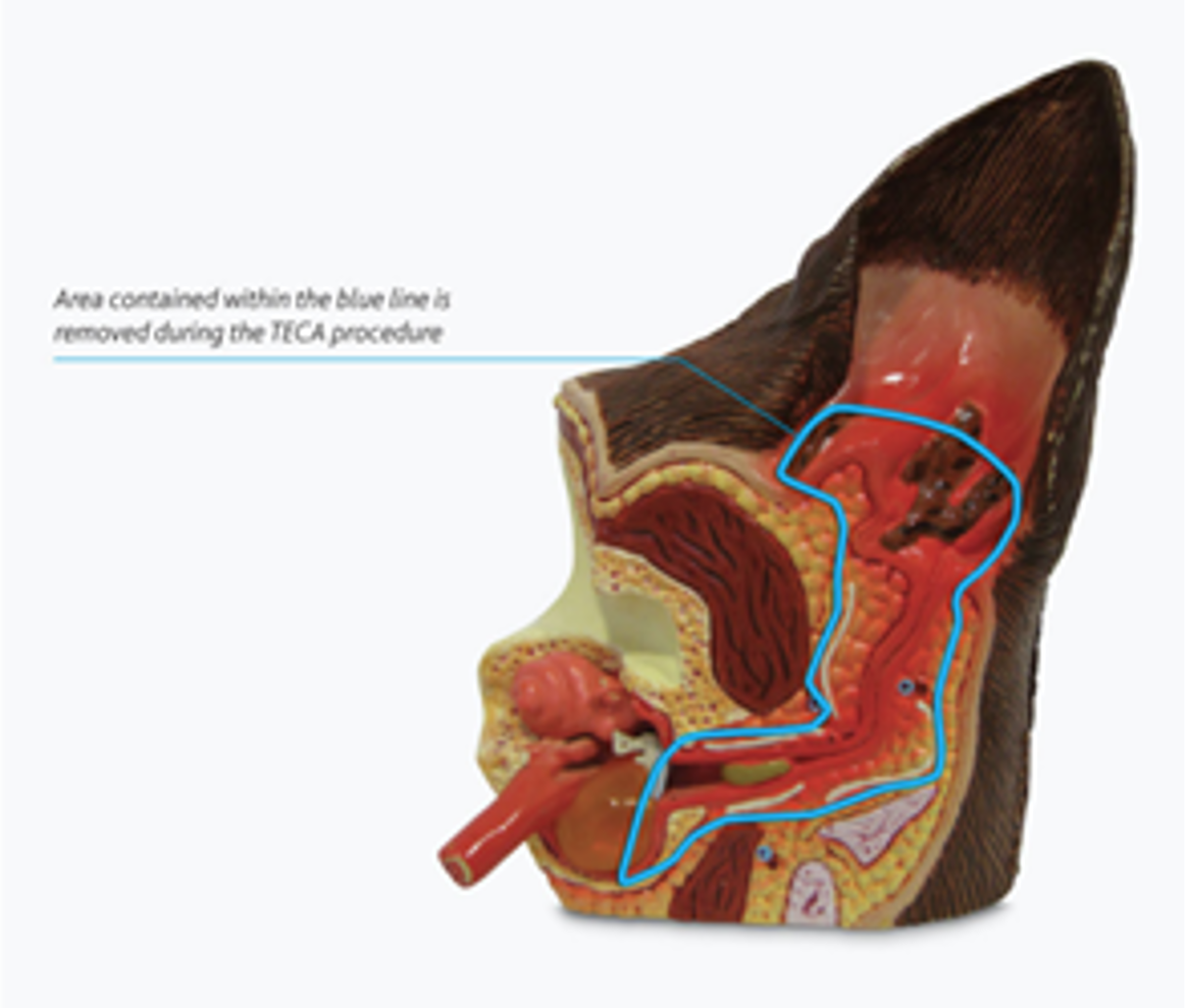What is a TECA/LBO?
Total Ear Canal Ablation and Lateral Bulla Osteotomy is a salvage procedure for dogs with end stage ear disease or tumours of the ear canal. Ear infections are painful and can be difficult to treat. By removing the ear canal, eardrum and flushing out the middle ear it is possible to relieve this intractable pain. The pinna and the actual hearing organ are left intact. After the diseased ear canal and eardrum are removed, part of the wall of the middle ear is removed to allow cleaning and flushing of the middle ear (tympanic bulla).

This surgery is usually performed after medical control of ear disease has failed, and the ear is very painful and difficult to manage. This can be extremely distressing for both the dog and their owner.
Indications for TECA/LBO surgery
- Severe untreatable or resistant infections of the ear canal (otitis externa)
- Infection of the middle ear (otitis media)
- Ear canal narrowing due to chronic ear disease
- Tumours of the external ear canal
- Difficulties in administering ear drops for otitis externa
What does the surgery involve?
The surgery involves removal of the vertical and horizontal ear canal. The middle ear is also cleaned and flushed to remove any infection. The ear pinna is left intact, and the wound is just below the pinna. The wound will be sutured with several sutures, which need to be removed after it has healed. The picture below show the parts of the ear that are removed during TECA/LBO (enclosed by the blue line).

Complications
As with every surgery, there are potential complications.
- The surgery will reduce your dog’s hearing. The hearing organ itself is not removed during the procedure, but the ear canal and ear drum function to magnify sound into the hearing organ, so their removal will significantly reduce hearing function postoperatively. Hearing has already often been affected by the ear infection or tumour and the reduction in hearing function is often minimal.
- The surgery can cause trauma to the facial nerve, this supplies the muscles of the face and loss of function can result in facial paralysis and a droopy face, this is not painful but will alter your dog’s appearance a little and may cause him to eat and drink messily. It is often temporary and will improve in 6-8 weeks.
- As with most surgical procedures, haemorrhage (bleeding) can occur at the time of surgery but is usually easily controlled during the procedure.
- Infection can occur postoperatively. Your vet will often recommend bacteriology with sensitivity testing on your dogs ear to identify and target any bacteria. If any ear epithelium is left behind underneath the skin, it can cause a discharge to burst out like an abscess after all wound has healed. The risk of this happening is very low with an experienced surgeon performing the procedure.
- Balance problems can result from damage to the balance organs during the procedure, again this is rare if the procedure is performed by an experienced surgeon.
Post operative care
You should make an appointment to see your vets between 2 and 4 days postoperatively to check the wound is healing normally, and at 14 days postoperatively for suture removal.




